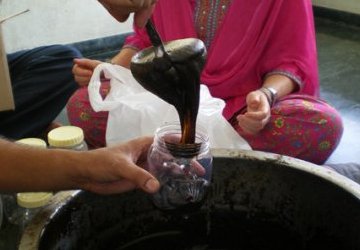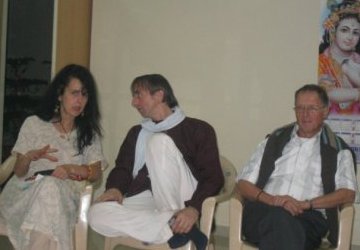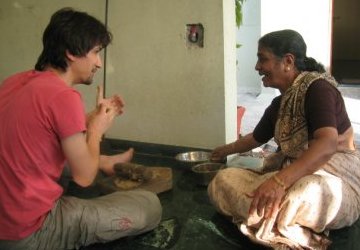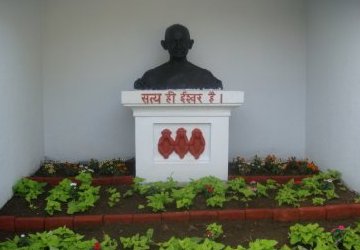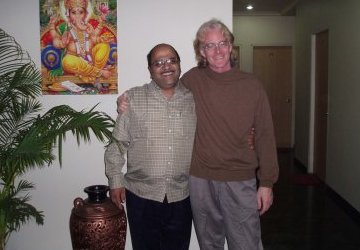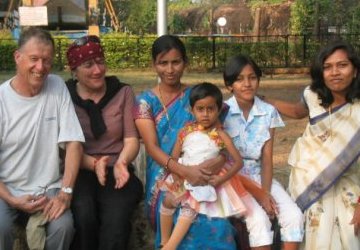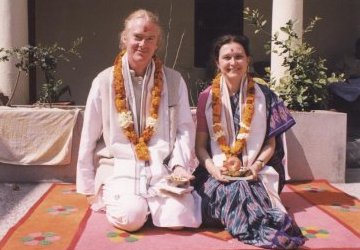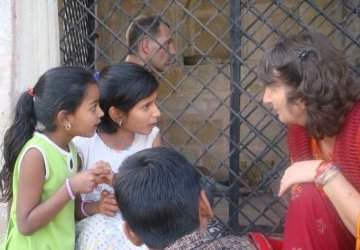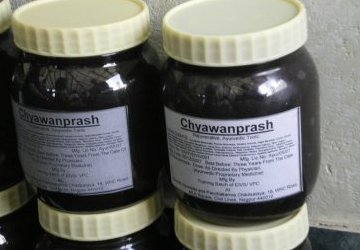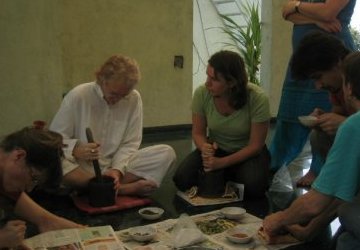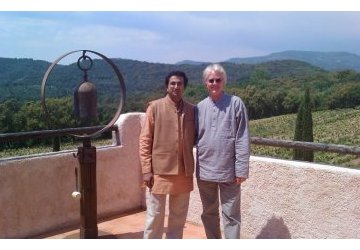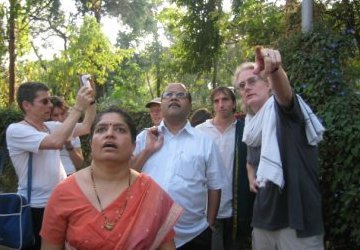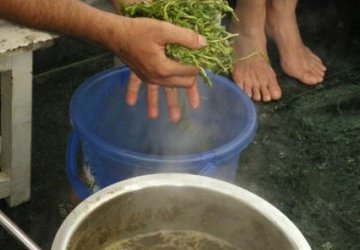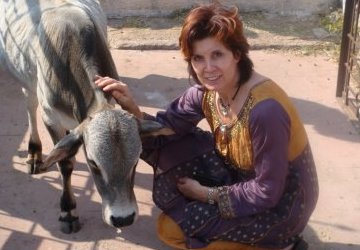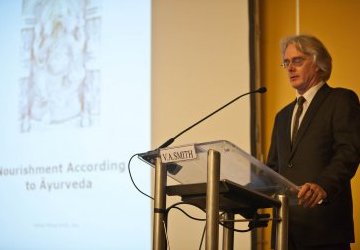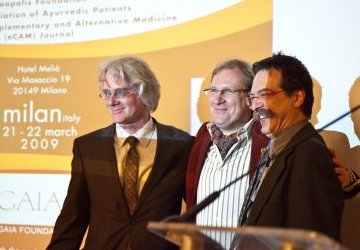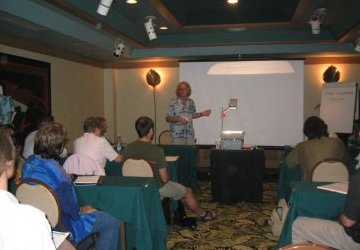What is Nourishment According to Ayurveda?
In order to define what nourishment is according to Āyurveda we need to understand the context of Āyurveda as both a medical system and world vision. Āyurveda is based on the concept that the universe and everything manifested within it is intelligent. This idea is fundamentally different than the current accepted scientific view that prefers to divide and separate living entities into pieces in order to understand them, which in effect, kills any intelligent principle within the entity.
To understand or study Āyurveda this basic precept of an intelligent universe needs to be taken into account – even if it is not accepted. Āyurvedic texts like the Caraka Samhita or Bhāvaprakāśa indicate through Sūtra or Sanskrit verse that this concept is the basis from which to under the whole system. For example, this text from one of the six classic textbooks of Āyurveda states clearly that all manifest matter (including humans) is derived from consciousness, or intelligence.
“Ātma is radiance in the form of pure consciousness that is eternal, unchanging and that has no desires or attributes; when combined with primordial matter it acquires qualities and creates the manifest world.”
Bhāvaprakāśa, Sṛṣṭi Prakaraṇa, 3
The Caraka Saṃhitā is considered to be the most authoritative text on Āyurveda in India and most scholars agree that it is the oldest of the six main manuscripts. In the section Sūtrasthāna, Chapter 26, Sūtra 9, Caraka states that nourishment is derived from Rasa.
“.… the source material for the manifestation of Rasa is based in the primary category of matter related to cohesion (jalabhuta); nourishment & emaciation are the actions of Rasa ….”
Thus, we can surmise that the word Rasa is indicative of nourishment in Āyurveda. The Sanskrit word Rasa is defined in the Monier-Williams dictionary as coming from the root Ras. This word, Ras, has interesting definitions: to taste, to be sensible of, to relish, to love, to feel, to desire to taste, and to perceive. Therefore, the root word of Rasa, nourishment in Āyurveda, means such diverse things as perception and tasting. This gives us an indication that “nourishment” may be a complex issue in Āyurvedic medicine and not simple a case of supplying nutrients to tissues.
Rasa means, “the juice, liquid, fluid or essence of any plant or living substance”. However, it can also mean the fluid or liquid essence of the human body. The word Rasa in Āyurveda often means the categorization of taste, or taste as a sense, and so can even be used to indicate the tongue which is the organ of taste.
Then again the word Rasa also means something more profound according to the Monier-Williams dictionary. It states that Rasa can mean “the inclination for something” or even “love, affection and desire” either generally or directed towards something. The dictionary further states that Rasa can indicate “charm, pleasure, delight” and the “feelings or sentiment prevailing” in an object or situation. Additionally, Rasa can indicate “tranquility or contentment”.
Why would the oldest, most respected text of Āyurveda use a word that has so many different meanings to indicate nourishment? This is because Āyurveda recognizes that to nourish the human being all aspects of the physiology and psychology must be taken into account.
By this definition a substance that has all the necessary vitamins and minerals may not be considered “nourishing” in Āyurvedic thought. According to this concept nourishment is something that should invoke a profound effect both physically and psychologically in a person. Perhaps it is like smelling your favorite meal as a child and having those odors stir memories of love and affection that surrounded your early home life. This example would indicate that something more than just tissues and fluids are being nourished and maintained by food. Thus, from the Āyurvedic point of view our senses interact with food to extract nourishment, pleasure, happiness and even love.
The Caraka Saṃhitā states that there are eight factors that determine the nutritive quality of food in the section Vimānasthāna, Chapter 1, Sūtra 21. This would give us a second indication of what nourishment could mean according to Āyurveda.
The eight factors are:
1. The nature of the food (fresh/old, nutritive, etc.)
2. The method of preparation
3. Food combinations during preparation and when eating
4. The quantity of food eaten
5. The environment where food is grown and eaten
6. The time food is eaten (daily, seasonally) and the age of the individual
7. The manner food is eaten (fast/slow, etc.)
8. The health of the individual
The result of the interaction of Rasa (the nutritive essence of food) with the eight primary factors (objective and subjective factors around food consumption) determines what is nourishing the body or causing disease.
Therefore, one possible definition of the term “nourishment” according to Āyurveda could be the following:
“Any substance, when taken correctly, that sustains tissue metabolism, gives contentment to the mind, and evokes emotions such as delight is considered nourishing”
“Wholesome food is one of the causes for the growth of living beings and unwholesome food for the growth of disease.”
Caraka Saṃhitā, Sūtrasthāna, Chapter 25, Sūtra 30
What is unwholesome food?
Fast food facts (2004)
– Each day, 1 in 4 Americans visits a fast food restaurant
– In 1972, Americans spent 3 billion a year on fast food, in 2004, Americans spent more than $110 billion
– French fries are the most eaten vegetable in America
– Most nutritionists recommend not eating fast food more than once a month
– One in every three children born in the year 2000 will develop diabetes in their lifetime
– Diabetes will cut 17-27 years off your life
– The World Health Organization has declared obesity a global epidemic
– 60 percent of all Americans are either overweight or obese
– Left unabated, obesity will surpass smoking as the leading cause of preventable death in America
– American Surgeon General David Satcher: "Fast food is a major contributor to the obesity epidemic"
– Obesity has been linked to: Hypertension, Coronary Heart Disease, Adult Onset Diabetes, Stroke, Gall Bladder Disease, Osteoarthritis, Sleep Apnea, Respiratory Problems, Endometrial, Breast, Prostate and Colon Cancers, Dyslipidemia, steatohepatitis, insulin resistance, breathlessness, Asthma, Hyperuricaemia, reproductive hormone abnormalities, polycystic ovarian syndrome, impaired fertility and lower back pain
Fast food effects on the planet
In the U.S.A., Americans eat more than 1,000,000 animals an hour
Livestock production accounts for 30 percent of the entire land surface of the planet! Feed crops are grown on a third of all arable farmland, and an even larger area is devoted to grazing – 26% of the ice-free land surface of the Earth.
A vegetarian world could be fed using just 5% of the Earth’s surface versus the 30% currently used for meat production.
“Livestock production is responsible for 18% of climate change – more than all of the world’s transportation.”
Food and Agriculture Organization of the United Nations – Livestock’s Long Shadow – Nov. 2006
Our choice of nourishment creates:
Health or Disease for our body
Health or Disease for our mind
Health or disease for our planet
In conclusion, the definition of nourishment according to Āyurveda cannot be simplistic or given only on a single dimension. As Caraka states in Sūtrasthāna, Chapter 25, Sūtra 30, wholesome food gives nourishment and unwholesome food gives disease. This is a key Sūtra to help us understand that by choosing a healthy or nourishing diet we are also choosing a healthy planet. When we choose unwholesome foods we are also contributing in a concrete manner to destroy our planet.
Thus, our responsibility is not limited to our body or even to our own happiness. Our food choices are contributing to over thirty percent of greenhouse emissions and are clearly destroying the planet. What is nourishment in Āyurveda? It is the conscious ability to love our body, our minds and our planet.
Copyright © 2016 EIVS GmbH
Ayurvedic Nutrition -






















